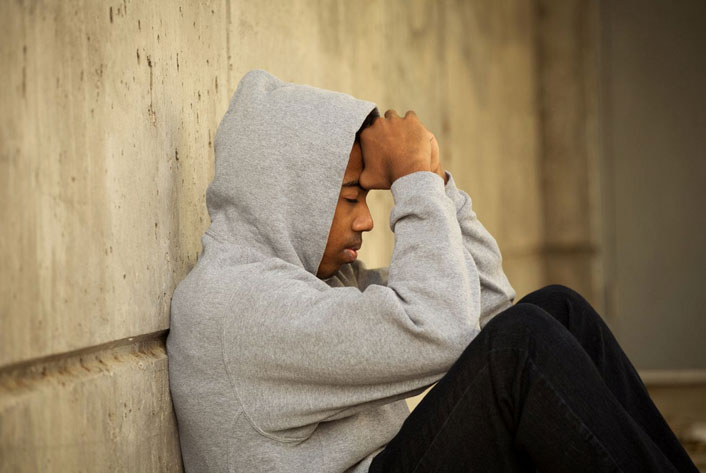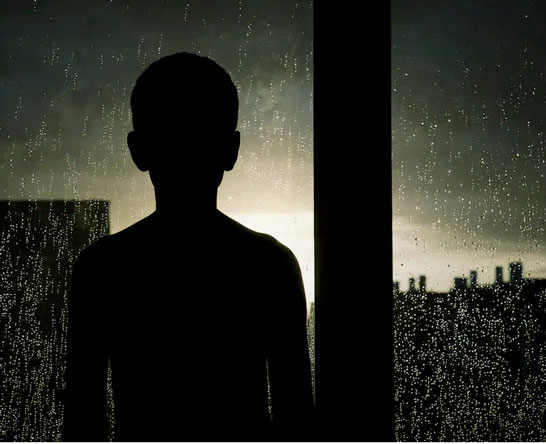Black suicide in America has historically been lower than whites for all age groups. So what has changed to cause this spiraling black suicides among young kids? A 2018 study has found that young black children are twice as likely to kill themselves as white kids of the same age. Have affluence, exposure to the online blackhole, or increased peer pressure in a fast-evolving and complex society led to this frightening trend?
Study
In 2018, the journal JAMA Pediatrics published a research paper that affirmed that “suicide rates in the United States have traditionally been higher among white than black individuals across all age groups.” However, it also found that black children aged between 5 and 12 had a suicide rate that is twice as high as that of white children of the same age. Between 1993 and 1997 and between 2008 and 2012, the black suicide rate increased for children aged 5 – 12 (from 1.36 to 2.54 per million). Simultaneously, it decreased among white children of the same age (from 1.14 to 0.77 per million).
Jeff Bridge, Center for Suicide Prevention and Research at Nationwide Children’s Hospital director is the study’s lead author. He said that the age-related disparity discovered is surprising because it contradicts long-held assumptions that suicide rates are uniformly higher in whites than in blacks in the U.S. And this is true. In previous generations, black suicide was a rare and mostly unheard of phenomenon.
Methodology
Researchers examined the Centers for Disease Control and Prevention (CDC) data of young Americans’ (aged 5-17 years) suicide deaths between 2001 and 2015. Overall, the black youth suicide rate was about 42% lower (1.26 per 100,000) than white youth (2.16 per 100,000), reflecting the national trend among all age groups. The study documented 1,661 black suicides and 13,341 among whites. However, splitting the larger population into two groups, ages 5-12 and 13-17, revealed a significant divergence. Black suicide in the 5-12 age group was twice as much as white.
Suicide rates were calculated using population estimates obtained from WISQARS. Age-specific incidence rate ratios (IRRs), corresponding natural logarithms, and 95% Confidence Indexes comparing suicide rates between black and white youths were estimated using negative binomial regression. Analyses were performed using Stata/IC statistical software (version 13.1; StataCorp) and a 2-tailed significance level of P < .05. This study was not considered part of human subjects research by the institutional review board of Nationwide Children’s Hospital, Columbus, Ohio.
Journal JAMA Pediatrics research paper
Study Results

Joel Greenhouse, professor of statistics and data science at Carnegie Mellon University and co-author of the study, said one of the reasons for carrying out the research was to highlight that very young children of all races are at risk of suicide. While true, the study he co-authored showed a significantly higher incidence of black suicides for youths ages 5-12 than white children of the same age group (IRR, 1.82; 95% CI, 1.59-2.07).
Greenhouse then noted another dismal finding for the older 13-17 age group. “Whereas from 13 to 17 years, the suicide rate was approximately 50% lower among black youths than among white youths (IRR, 0.51; 95% CI, 0.48-0.53), it is also important to note that the homicide rate for black youths aged 13-17 is between five to seven times greater than for white youths and may indeed be a competing risk for suicide in this age group,” he said. Even where there might be a little good news in the numbers of the older 13-17 age group, it is even more horrible news in another sense.
Think of the Grim Reaper as a statistical force entering “any black town USA” that separates children and teenagers into two groups. It presents those aged 5-12 the option to kill themselves and become a black suicide statistic while those 13-17 get the opportunity to kill each other and become a black homicide statistic.
A Longer Is Discussion Needed
As I noted in a story I posted on race and mental illness, mental health bias starts in kindergarten – as does racial hostility in some areas. While many parents are busy with life, work, and children, their children take on an individual burden, unknown to parents, at a very early age. The study highlighted the need for further investigation:
Our findings underscore the need to explore potential race-related differences in mechanisms of suicide and to develop more effective suicide detection and prevention efforts for black children. Ongoing surveillance efforts must reflect the dynamic association between race and age-related risk for youth suicide.
Journal JAMA Pediatrics research paper
It did not delve into the factors driving the disturbing black suicide trends and age group disparities, but the author delineated what he thought were not contributing factors. Bridge said, “The large age-related racial difference in suicide rates did not change during the study period – suggesting that this disparity is not explained by recent events such as the economic recession.”
That is believable. Why would we presume that 5-12 year-olds are killing themselves because of an economic recession? Outside of extreme cases where the parents lose the house and have to move to a cheaper neighborhood and a change of school, children are often oblivious to economic recessions, outside of the stress it causes in the home.
Indeed, suicide is mostly an affliction of the privileges in privileged societies. Suicide doesn’t exist as a widespread phenomenon in the developing world or even in poor communities in America, for that matter. Where suicide becomes a phenomenon among children as young as age 5, it beckons society and parents to take note.
Parenting Matters

As a single father who raised my son in multiple countries under different languages and social cultures, at all times, I was obsessed with his mental state because I was concerned with cognitive overload. So until he was about age 15 or 16, I strongly restricted his computer, television, and video game access, and I artfully violated his privacy every week. I needed to see what he was thinking, writing, and playing with when he would lock himself in his room. As a parent, my interest in raising a “normal child” outweighed all other considerations.
In the end, it was as if I had raised three or four children instead of one child. The child I raised in France at varying stages was different from the one I raised in England. And yet, when we moved back to New York, he became an almost alien being in no time. I exhausted myself competing with distractions, peer pressure, and a sense of diminished importance in my son’s life in his teen years.
While in high school, we had almost weekly discussions about drugs, social interactions, race relations, and so forth. As a busy professional and black father in New York City, there were times when I felt like society had the perfect plan to diminish my importance and rob me of my child. I had to stand vigilant at all times.
I read books and studies on the impact of overexposure that diminishes attention span and retards tolerances for ambiguities (defeating societal requirements rife with ambiguities). Interacting with other parents convinced me that some of us were the worst influences on our children’s lives: we buy them things rather than teach them something. We clutter their lives with distractive devices rather than giving them tools to declutter and clarify life’s complications.
In the end, as much as I thought that I had perfected the fatherhood experience, I realize that there was a lot I had missed. Conversations over the years with my son (now in his late twenties) reveal that there were many “near misses.” I was completely oblivious.
Racism, LGBTQ Identification, And Other Forms of Alienation
The knee-jerk reaction in America attributes racism to anything negative that confronts blacks. But that is simplistic and often distracts from real issues, so we end up in vicious cycles of social decadence and lipservice. Racism is always a factor but determining its weight is not so clear-cut. Pathologies often start at home, and where they originate outside, parents are often “missing in action” – out of touch with their children and the burdens, real or imagined, that befalls them.
Today, LGBTQ identifications still carry a stigma and meet much persecution and ostracization in the black community. We see cases where households’ religiosity leads parents to cut ties with the children and throw them out of the home. Though an end-result, it is likely a culmination of many years of internal rejection and persecution of the children.
The JAMA Pediatrics study found the black suicide pattern held for boys and girls. It highlighted its limitations beyond the age-specific data evaluated, noting, “The existing literature does not adequately describe the extent of age-related racial disparities in youth suicide, and understanding racial differences is critical to developing targeted prevention efforts.”
It further noted, “We lacked information on key factors that may underlie developmental racial differences in suicide, including access to culturally acceptable behavioral health care4 or the potential role of death due to homicide among older black adolescents5 as a competing risk for suicide in this subgroup. Future studies should aim to clarify whether risk and protective factors identified in studies of primarily white adolescent suicide decedents are associated with suicide in black youths and how these determinants change throughout childhood and adolescence.6″
According to the study, there is no evidence that the observed age-related racial differences in suicide rates changed from 2001 through 2007 or from 2008 through 2015. The authors also noted the apparent: Understanding racial disparities across the spectrum is crucial to developing targeted prevention efforts.
Finally, the parental point of departure is to become more connected to their children, less alienated from their internal turmoils. We have a study that illuminates a dire set of results. But we are still in the dark as to the drivers of those results and with no broader societal public policies in place to address the underlying issues.
If you like this story, please subscribe and share, if possible
Resources:
National Suicide Prevention Lifeline Hours: Available 24 hours. Languages: English, Spanish. Learn more 800-273-8255
Child Suicide Prevention Center: https://www.sprc.org/populations/children
How to Talk to Children about Suicide: An Age-by-Age Guide
National Suicide Prevention Resources
Resource For Suicide Prevention
